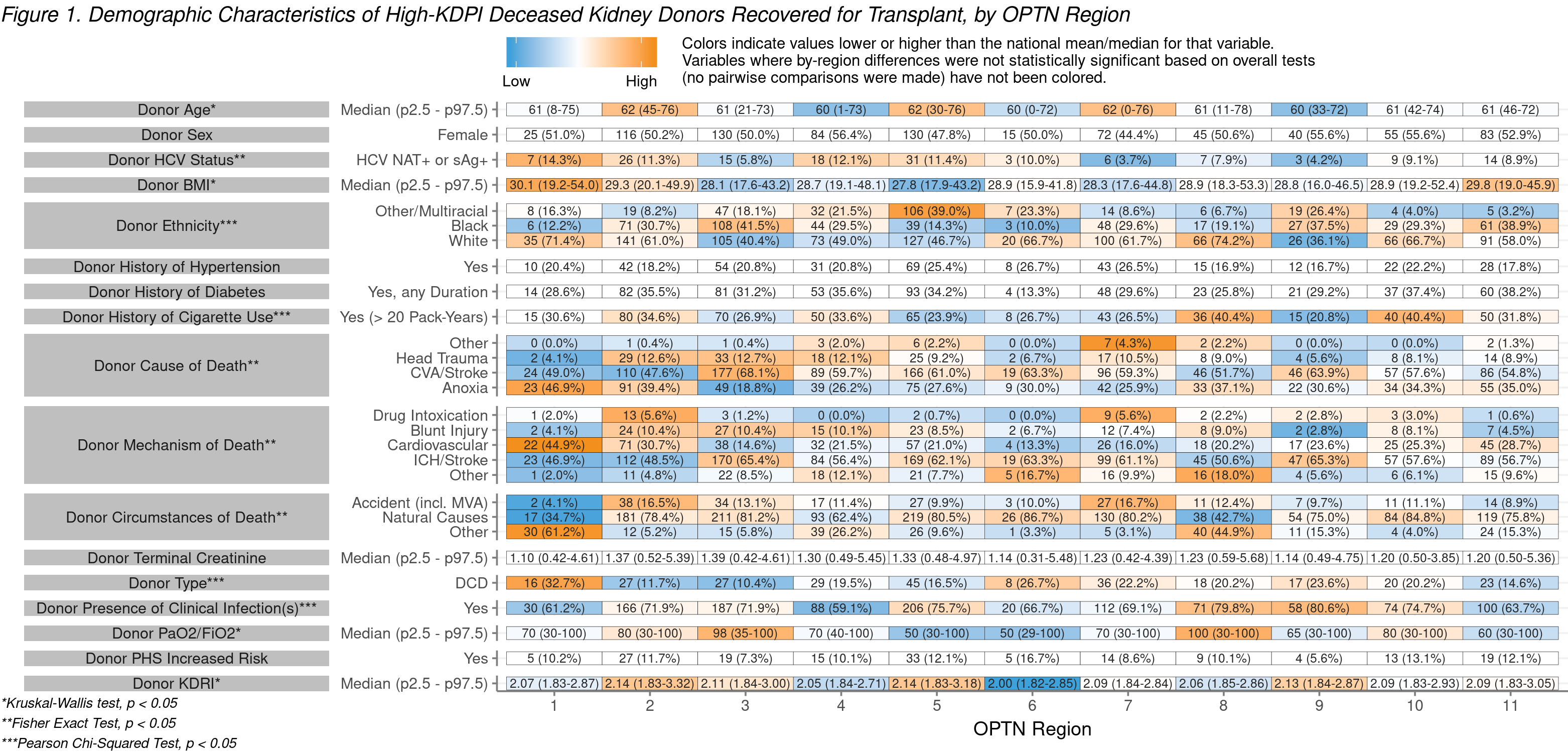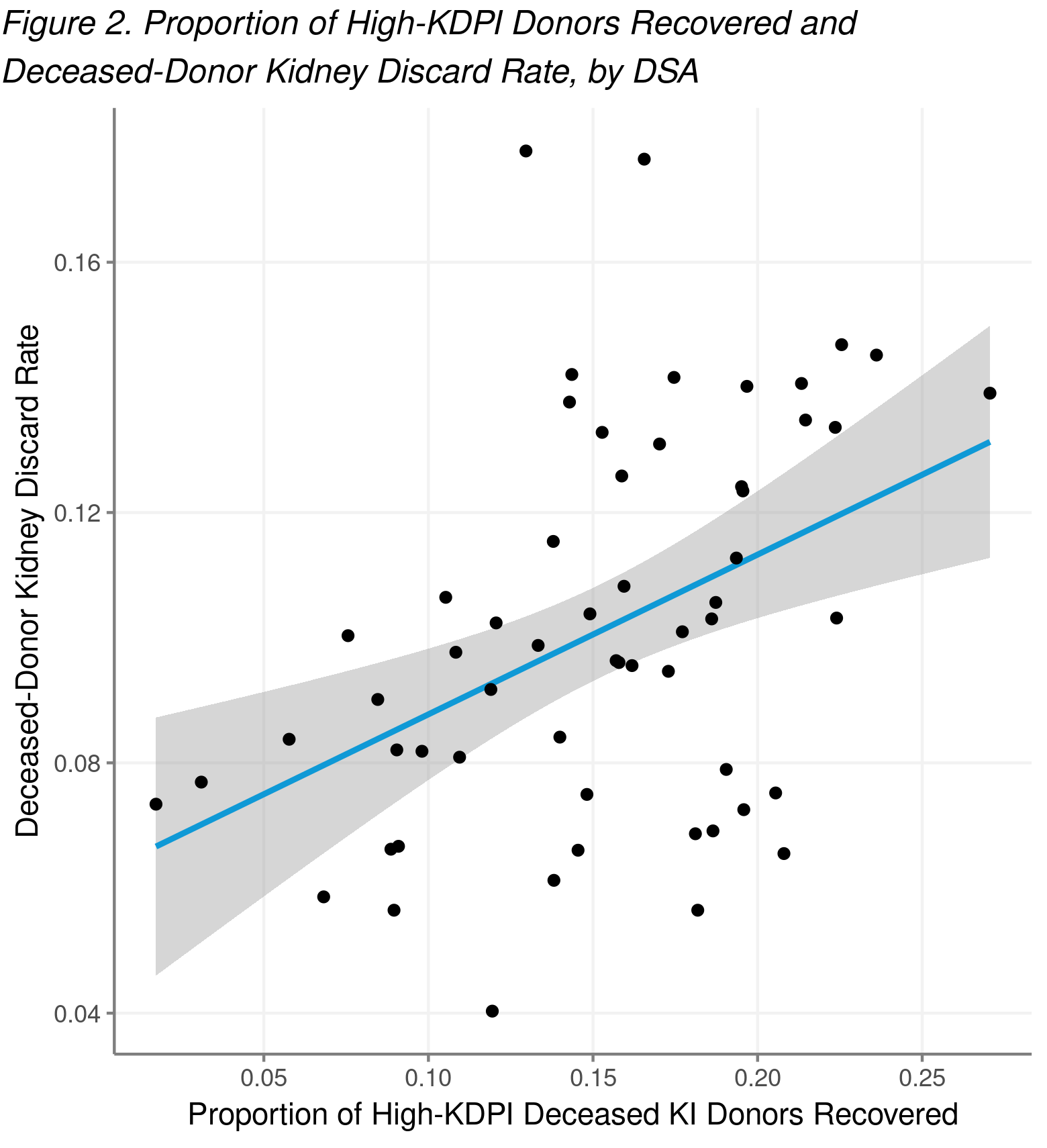Geographic Variation in Characteristics of High-KDPI Donors
1United Network for Organ Sharing, Richmond, VA, 2Dell Seton Medical Center, Austin, TX
Meeting: 2020 American Transplant Congress
Abstract number: A-046
Keywords: Donors, marginal, High-risk, Kidney, Risk factors
Session Information
Session Name: Poster Session A: Kidney Deceased Donor Selection
Session Type: Poster Session
Date: Saturday, May 30, 2020
Session Time: 3:15pm-4:00pm
 Presentation Time: 3:30pm-4:00pm
Presentation Time: 3:30pm-4:00pm
Location: Virtual
*Purpose: The kidney donor profile index (KDPI) was incorporated into kidney allocation in the United States in 2014, and discard rates for high-KDPI donors (86-100%) remain the group for which kidneys are most frequently discarded. The objective of this study was to examine OPTN regional and DSA-level patterns among high-KDPI donors (86-100%) and kidney discard rate.
*Methods: A retrospective cohort of OPTN database of deceased kidney donors recovered for transplant during 2018 was used for analysis. By-region differences among high-KDPI donors were analyzed using Kruskal-Wallis, Chi-Square, or Fisher’s exact tests where appropriate. A simple linear regression model and Wald tests were used to compare kidney discard rates with high KDPI donor recovery across DSAs.
*Results: 9,687 deceased kidney donors were recovered for transplant during 2018; 1,570 (16%) were classified as high-KDPI donors. The range of KDRI scores varied by OPTN Region (p=0.011), with Region 2 having the highest median and widest range of KDRI among such donors (median 2.14, range 1.82-4.03). In Regions 1, 2, 4, 5, and 6, HCV-positive donors (by NAT or serology testing) made up at least 10% of high-KDPI donors, and was lower in other Regions (p=0.035). Additionally, there were significant differences in donor BMI (p=0.046), DCD status (p<0.001), and donor ethnicity (p<0.001) across OPTN Region, while history of diabetes (p=0.195) and history of hypertension (p=0.403) were not significantly different [Figure 1]. Kidney discard rates, on average, were related to the number of high-KDPI kidney donors recovered: a 10%-point increase in the number of high-KDPI kidney donors recovered was associated with a 2.5%-point decrease in kidney utilization (95% CI: 1.2-4.0) across DSAs. [Figure 2]
*Conclusions: Our results demonstrate the variety of trends pertaining to demographics and risk factors throughout the United States that make up high-KDPI donors. Although true donor risk is multidimensional, understanding individual population trends present among donors across the country, transplant professionals can augment their current decision making practices in choosing the right kidney for the right candidate.
To cite this abstract in AMA style:
Vece GR, Wilk A, Turgeon N. Geographic Variation in Characteristics of High-KDPI Donors [abstract]. Am J Transplant. 2020; 20 (suppl 3). https://atcmeetingabstracts.com/abstract/geographic-variation-in-characteristics-of-high-kdpi-donors/. Accessed December 14, 2025.« Back to 2020 American Transplant Congress


